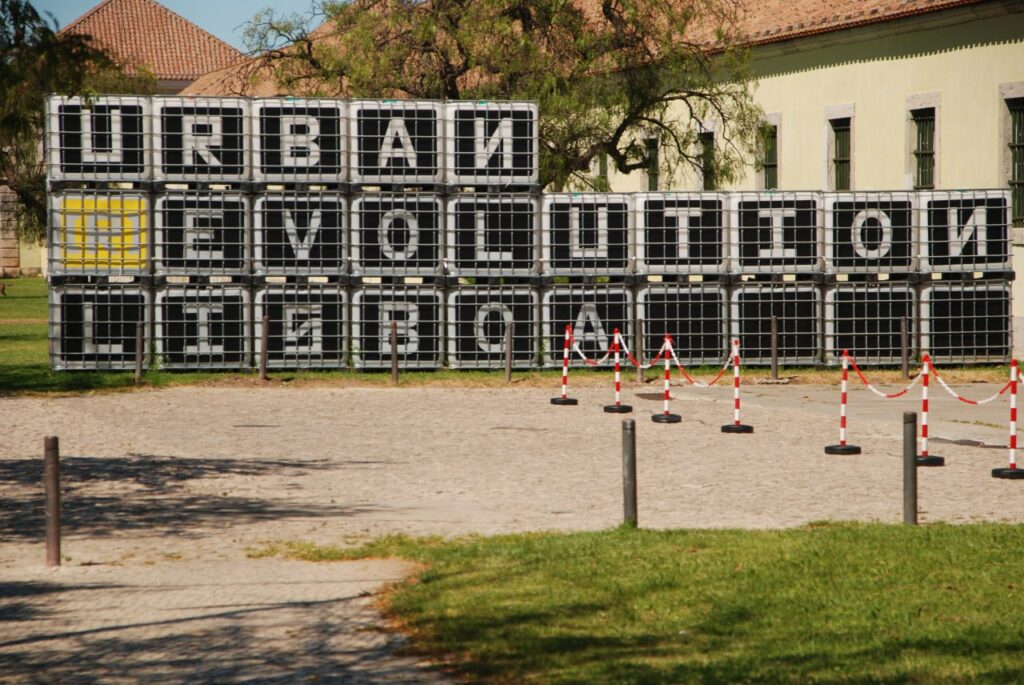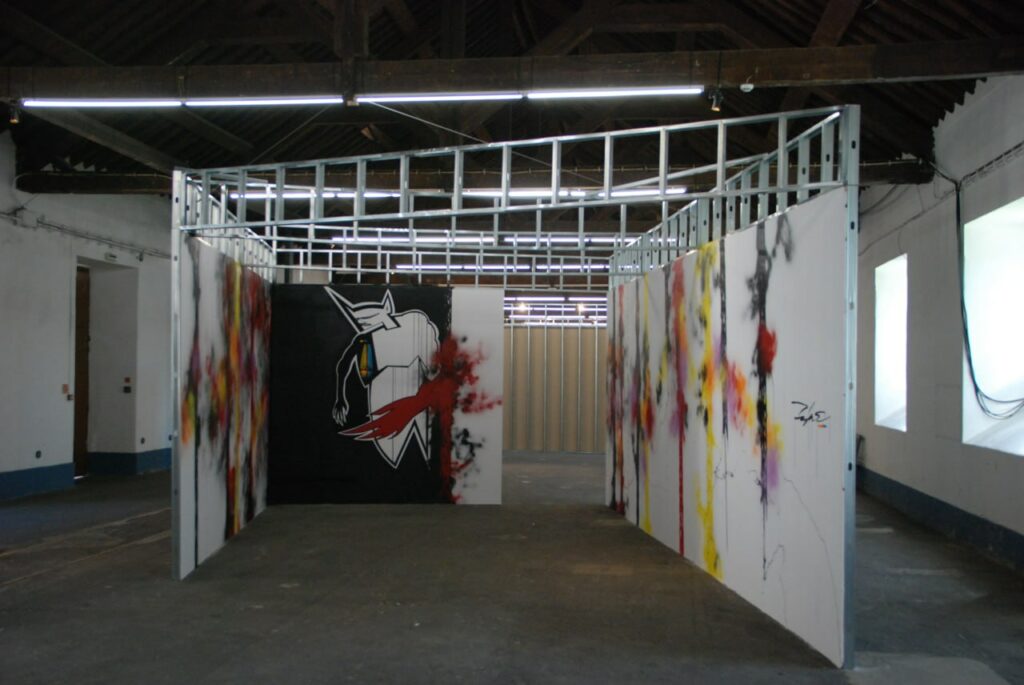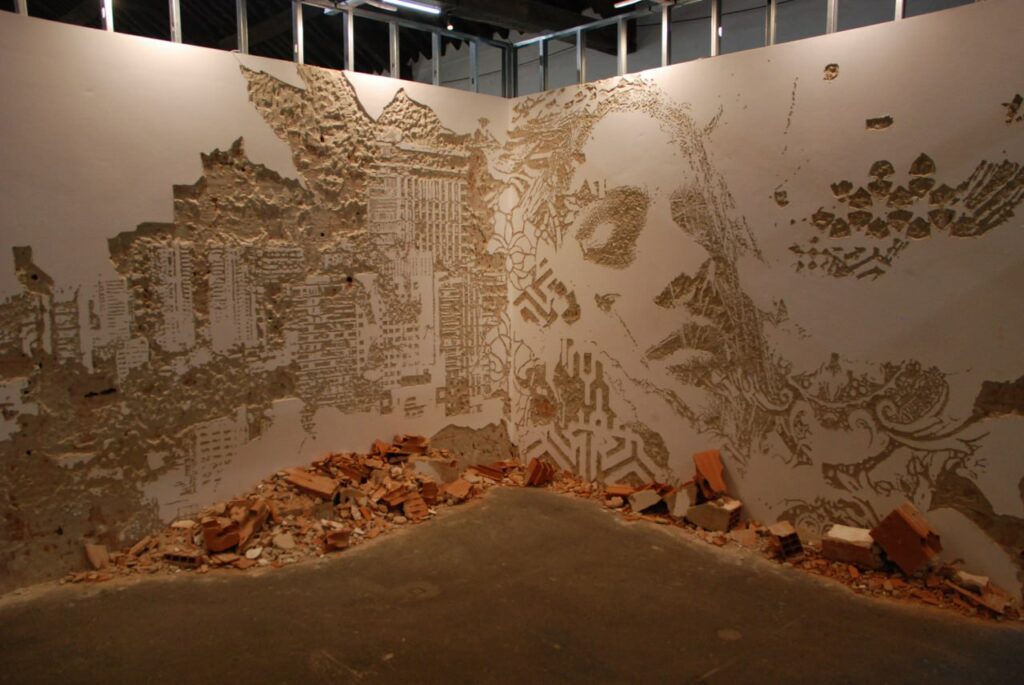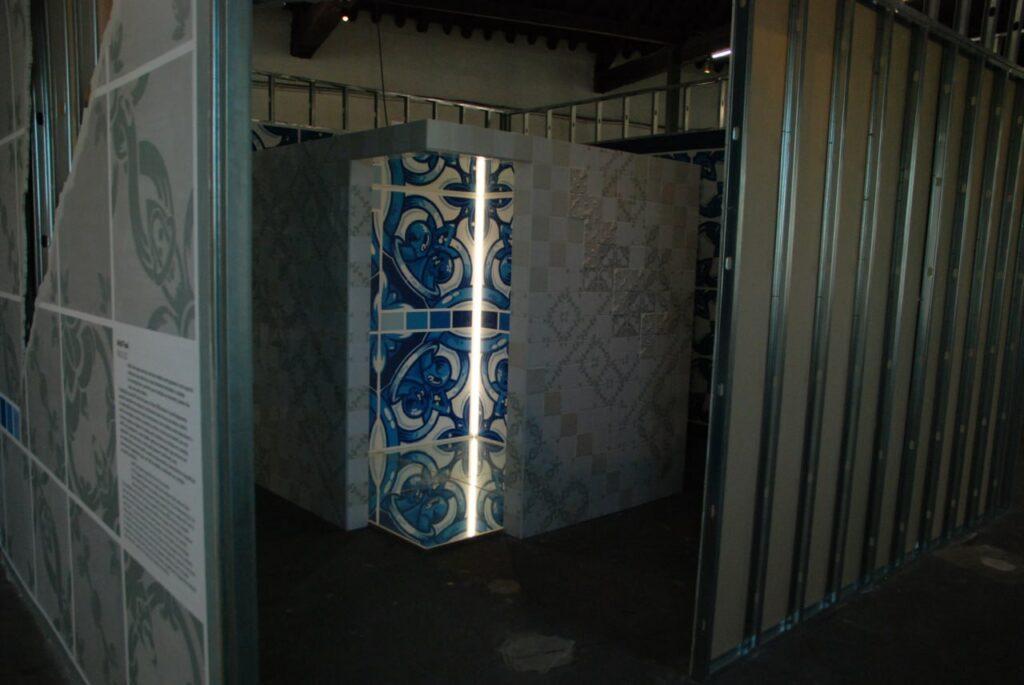Urban(R)Evolution chronicles the fascinating development of urban art, beginning with its early stages as tags, graffiti, and subway pieces, progressing through the influential middle period and, eventually, giving rise to street art. The art form originated with spray paint and wheat paste but quickly evolved to incorporate various techniques from around the globe. The explosive combination of graffiti, breakdancing, and rapping led to a worldwide eruption of popular expression. […] The revolutionary aspect of the show lies in the intentional accessibility of the artwork from the urban art movement. The artists’ openness to working on any surface and their use of diverse media and techniques were groundbreaking for a global art movement. Urban(R)Evolution explores the phenomenal creative explosion that swept across the world, facilitated by the power of mass media and the low barrier to entry for artists. SOURCE: https://urbanrevolution.pt/en/home/ Curators: Pauline Foessel and Pedro Alonzo
The city of Lisbon is an apt place for this exhibition. Over the last ten years, the city has experienced an urban revolution in terms of commercialization, modernization and gentrification, selling out its unique, if partially dilapidated, structure and atmosphere in exchange for revenue stemming from investment capital and the tourist industry which increasingly overwhelm the city’s infrastructure.
Much has already disappeared and can be seen only in collections of photographs such as Victor Palla and Costa Martins’s Lisboa: Cidade triste e alegre or Eduardo Gageiro’s Lisboa: amarga e doce.

This exhibition chronicles the evolution of urban art and its essential counter-cultural orientation. Urban art, as understood here, challenges established ways of seeing things but also engages prevailing understandings of the role and function of art in society, liberating art from its confinement in galleries and museums.
Aesthetic gratification, which most of the works presented in the exhibition are certainly capable of generating, is of only secondary importance when compared with the democratizing potential of urban art and its ability to serve as a political witness, not only bearing witness to socio-political developments but also pro-actively seeking to influence these developments for the benefit of the citizens.
The work of Alexandre Farto (aka Vhils), for example, reveals “the layers of life,” some of which have irreversibly disappeared from the city’s surface but others may still be rescued from oblivion or reinvented: Vhils, as the exhibition puts it, “removes in order to expose, ultimately paying tribute to the countless unknown faces that make up our urban societies.”
Bridging “the gap between the street and the gallery circuit” since the 1970s, Futura’s work “continues to build upon his artistic past and the rich heritage of graffiti, while maintaining a sense of independence and progression.” Engaging with the azulejo ceramic tile – one of Portugal’s trademarks – Add Fuel subtly and playfully reinvents this tradition thus counteracting nostalgia (which is never far away in this country and its saudade mentality).
Many artists here explore the condition of tension between memory and forgetting, destruction and reconstruction, visibility and invisibility, the known and the unknown, refusing to think of these concepts in binary terms. Instead, they aspire to show the co-presence of many things that, rather than being mutually exclusive, often condition one another in an endless struggle for visual-discursive superiority. Despite the seeming spontaneity of their work, much thorough research goes into it.
Dominick LaCapra noted that “art, in its specific (often highly mediated, indirect, darkly playful, powerful but other than narrowly documentary or informational) forms of bearing witness and testifying to [the] past” might make “more available other possibilities in the present and future.” In this quotation, LaCapra hardly thought about graffiti and urban art. As this exhibition shows, however, urban art opens windows to urban futures; it should not be reduced to its playful ingredients, of which there are plenty, but seen as a necessary, if increasingly marginalized and, in an age characterized by the privatization of formerly public and openly accessible space, even criminalized, articulation of urban life and urban alternatives.



ARTISTS
± Maismenos ±
Add Fuel
Akacorleone
André Saraiva
Barry McGee
Felipe Pantone
Futura
Jason Revok
Lee Quiñones
Martha Cooper
Maya Hayuk
Nuno Viegas
Obey Sktr
Shepard Fairey
Swoon
Tamara Alves
Vhils
Wasted Rita
More information: https://urbanrevolution.pt/en/home/
URBAͶ [R]EVOLUTIOͶ is at Cordoaria Nacional Lisboa until 3 December 2023
References
Gageiro, Eduardo (2012) Lisboa: amarga e doce, Punkte Art – Produções Gráficas
LaCapra, Dominick (2004) History in Transit: Experience, Identity, Critical Theory, Cornell University Press
Palla, Victor and Costa Martins (2015) Lisboa: Cidade triste e alegre, Pierre von Kleist Editions
Photographs taken at the exhibition for strictly non-commercial purpose (c) Frank Möller
